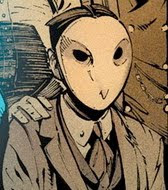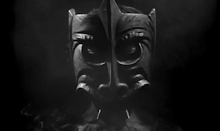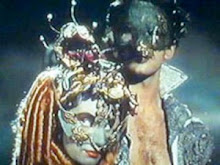The key word in the title Encounters At The End Of The
World is Encounters. For any other filmmaker it would be a word strictly
defined to the encounters the film crew had with the landscape and found in
Antartica, an almost incomprehensibly harsh and wild environment. And Herzog
gets his fair share of that. But for Herzog, that also means encountering the
people, he’s fascinated by the landscape but studying the personality that
brings someone to the very ends of the Earth and pushes them to go even further
is what really drives him, A Machinist who contends that he is descended from
the Aztec royal family, a zoologist who has spent so much time with penguins
that he is markedly uncomfortable with people; the film easily could have been
titled Some Strange People That Werner Herzog Met In Antarctica.
Because make no mistake, though this is a G-rated movie,
mellow enough to show to Grandma and the kids, the personalities Herzog finds
at the bottom of the world are every bit as intense as any who have populated
his R-Rated Opuses (in one of the best running gags the joke “Everyone who
ended up in Antarctica just fell off the real world and slid to the bottom” is
told about a half dozen times by different people). The soft spoken, dedicated
scientists might not look like Klaus Kinski, but they speak in the same tone of
barely suppressed fervor nd have the same farseeing glint in their eyes..
Life in the Antarctic takes on a surreal bent, both for
humans and animal. Base workers walk around with buckets strapped to their
heads during survival training, in order to simulate a white out. There’s the
hulking square compound itself, looking vaguely like a Moon Base found on
earth. There’s hallucinatory surroundings, shifting fields of ice. A woman
blowing off steam at a bar on the compound fits herself into a suitcase.
Underneath sheets of ice so thick that holes have to be dynamited for the
diver’s encounters, luminescent beings live that look like illustrations. No
other filmmaker has Herzog’s gift for finding images that look as though they
should not exist. He narrates them
all in his unflappably calm, clipped Teutonic tones. Still marveling at the
strangest of nature with the wonder glazed intensity that he spoke of in The
Burden Of Dreams, his awe always tempered ever so slightly be amusement and
horror.
If the documentary feels a bit more mellow than Herzog’s
usual work, despite some doom saying near the end, it is only because the
continent speaks so well for itself. Herzog seems comfortable here, even within
the crater of a huge active Volcano, in a way he never did in the lush Rain Forrest of Burden of Dreams, and the other wildernesses he has visited. If it is true
that Antarctica attracts a certain type of intense personality, than it is no
surprise that Herzog eventually made his way to the ends of the Earth. All that
is surprising is that it took him so long to get there.
...
Hey guys I know it's been pretty quiet here this month, and er- it's probably going to be pretty quiet here next month too.
Mostly this is because every moment of spare time I have as a writer has been dedicated to Son Of Danse Macabre. I'm bearing down hard, we're in the home stretch here, I'm hoping to finish The Modern American Horror chapter by the end of the year. Which will leave only two (2) chapters to go. Check it out if you haven't yet had a chance lately.
I've also taken some time to do some much needed fiction work. Including a piece I'm in the middle of drafting for the ambitious Mr. Jose Cruz's Mad House. If you know Mr. Cruz you know he's one of the most enthusiastic horror bloggers out there, and his new project should be a fun one. So if you've got something creaking in your drawer why not join me in the first issue. Should be fun.
I've also taken some time to do some much needed fiction work. Including a piece I'm in the middle of drafting for the ambitious Mr. Jose Cruz's Mad House. If you know Mr. Cruz you know he's one of the most enthusiastic horror bloggers out there, and his new project should be a fun one. So if you've got something creaking in your drawer why not join me in the first issue. Should be fun.








































































































